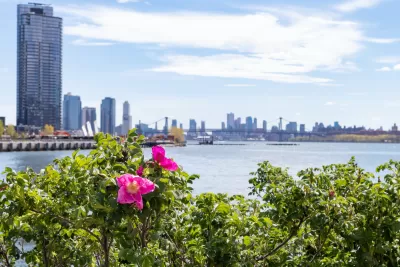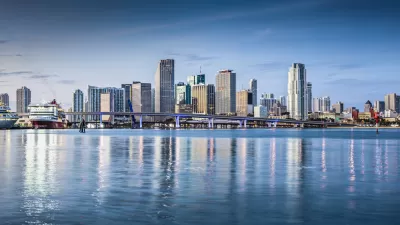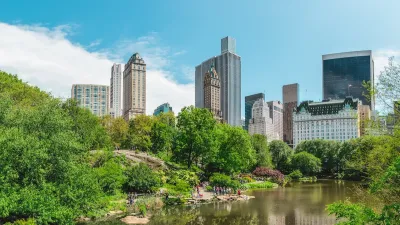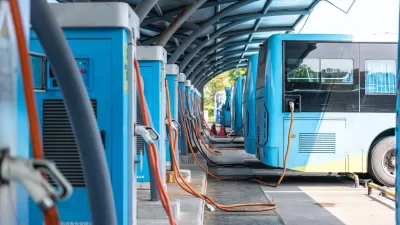As climate change, the pandemic, and a historic housing crisis continue to impact the nation, experts weigh in on the issues that could shape the future of the built environment in 2022.

In a multi-author brief, Brookings staff and senior fellows assess the built environment issues that could dominate 2022.
For Dr. Newsha K. Ajami, the quality of water infrastructure will be a crucial concern as water supplies diminish and demand grows. Ajami suggests investing in the hard and soft infrastructure required for a "circular water economy" that reclaims and reuses water in innovative ways.
Alex Berke draws attention to the proliferation of mobile phone data, the ways planners can use this new source of information about travel and mobility to guide policy, and the ethical implications of managing these datasets.
Anika Singh Lemar notes the long history of racial injustice in American land use and housing policy, calling for a renewed commitment to quantifiable advancements in equity.
Other researchers highlight the importance of hurricane protection projects, federal fair housing enforcement, and addressing capacity deficiencies that prevent communities from accessing federal investments. Additional concerns include broadband infrastructure, the need to reimagine the suburbs for changing demographics and values, transportation funding that supports sustainable transit, and addressing the continuing housing crisis.
At the heart of many of these challenges is the looming threat of climate change, which is causing a strain on resources, increasingly destructive natural disasters, and rising sea levels that threaten coastal communities. Jan Whittington writes that cities must take urgent action to limit global warming by investing in climate-friendly infrastructure and identifying resilience strategies that can be deployed at the city scale.
FULL STORY: Around the halls: Built environment issues that could define 2022

Alabama: Trump Terminates Settlements for Black Communities Harmed By Raw Sewage
Trump deemed the landmark civil rights agreement “illegal DEI and environmental justice policy.”

Planetizen Federal Action Tracker
A weekly monitor of how Trump’s orders and actions are impacting planners and planning in America.

The 120 Year Old Tiny Home Villages That Sheltered San Francisco’s Earthquake Refugees
More than a century ago, San Francisco mobilized to house thousands of residents displaced by the 1906 earthquake. Could their strategy offer a model for the present?

In Both Crashes and Crime, Public Transportation is Far Safer than Driving
Contrary to popular assumptions, public transportation has far lower crash and crime rates than automobile travel. For safer communities, improve and encourage transit travel.

Report: Zoning Reforms Should Complement Nashville’s Ambitious Transit Plan
Without reform, restrictive zoning codes will limit the impact of the city’s planned transit expansion and could exclude some of the residents who depend on transit the most.

Judge Orders Release of Frozen IRA, IIJA Funding
The decision is a victory for environmental groups who charged that freezing funds for critical infrastructure and disaster response programs caused “real and irreparable harm” to communities.
Urban Design for Planners 1: Software Tools
This six-course series explores essential urban design concepts using open source software and equips planners with the tools they need to participate fully in the urban design process.
Planning for Universal Design
Learn the tools for implementing Universal Design in planning regulations.
Clanton & Associates, Inc.
Jessamine County Fiscal Court
Institute for Housing and Urban Development Studies (IHS)
City of Grandview
Harvard GSD Executive Education
Toledo-Lucas County Plan Commissions
Salt Lake City
NYU Wagner Graduate School of Public Service





























